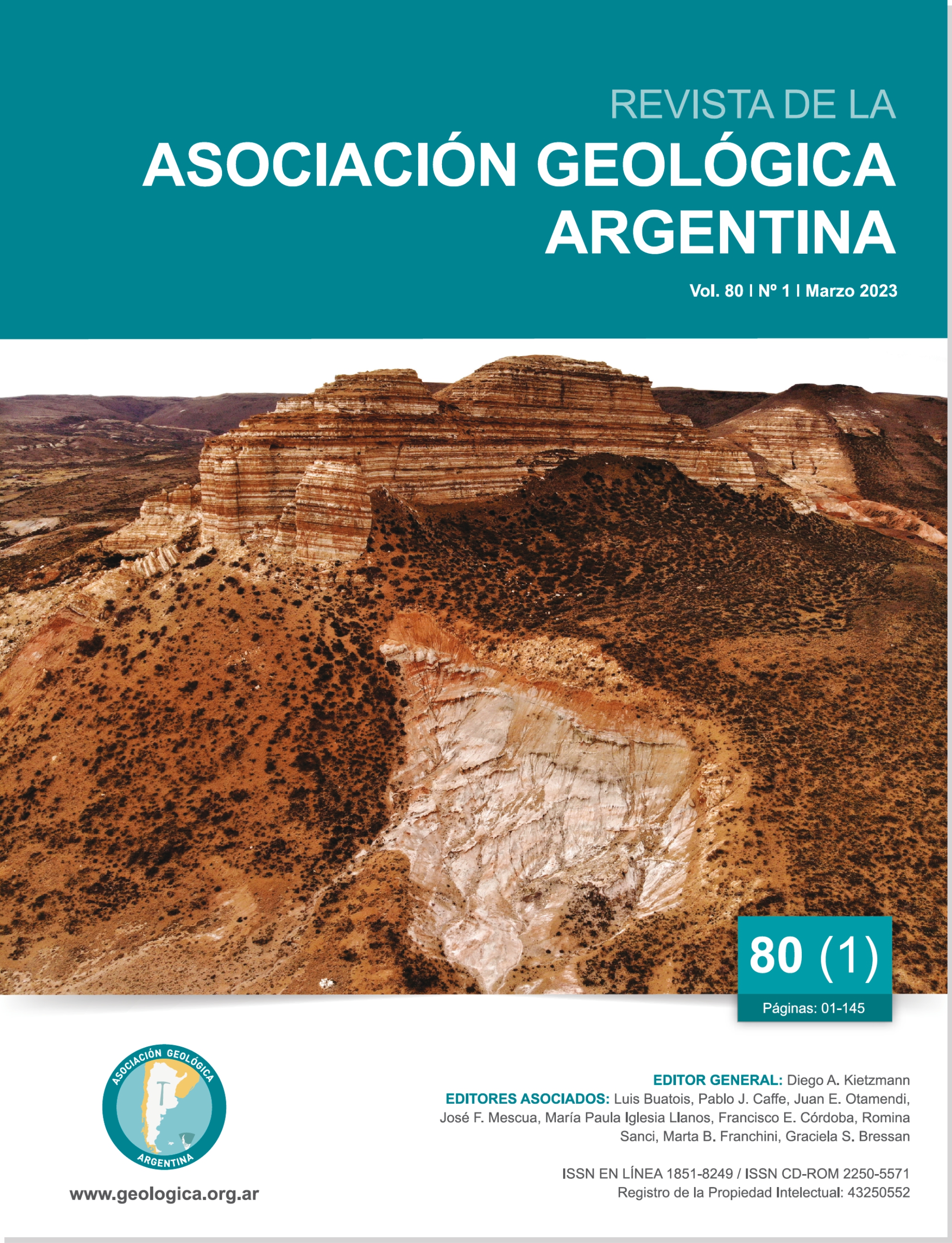Aplicación del modelo cinemático Trishear a plegamiento por propagación de falla: nuevos resultados obtenidos a través de modelado analógico en 2D
Contenido principal del artículo
Resumen
Comprender la mecánica, geometría y cinemática del plegamiento por propagación de falla se ha convertido en un importante campo de investigación. En particular, los experimentos de laboratorio han proporcionado información útil, ya que permiten observar en tiempo real el desarrollo progresivo del plegamiento. En esta oportunidad, se realiza un modelo análogo en 2D para, en primer lugar, estudiar el campo de velocidad durante el plegamiento por propagación de falla, y luego, poder compararlo con los propuestos por el modelo teórico-cinemático Trishear. Para ello, empleamos una técnica basada en correlación óptica de imágenes que no es destructiva (PIV, particle image velocimetry). A través de este procesamiento, pudimos obtener perfiles de velocidad, tanto paralelos como perpendiculares a la falla, durante las diferentes etapas del desarrollo del experimento. En este sentido, los vectores de velocidad del bloque colgante exhiben una disminución gradual en la componente paralela a la falla hacia el bloque yaciente, mientras que la componente perpendicular a la falla se vuelve negativa, lo que se ajusta bien con el modelo cinemático Trishear. Además, comparamos
la geometría del pliegue modelado en laboratorio con las geometrías de pliegue predichas por el modelo Trishear para varios ángulos apicales, así como también, probamos que Backlimb Trishear proporciona una aproximación útil del campo de velocidad en el experimento.
Detalles del artículo

Esta obra está bajo una licencia internacional Creative Commons Atribución-NoComercial 4.0.
Nota de copyright
Los autores conservan los derechos de autor y garantizan a la revista el derecho de ser la primera publicación del trabajo licenciado según una licencia de atribución Creative Commons que permite a otros compartir el trabajo con el reconocimiento de la autoría y de la publicación en la que se publicó por primera vez.
Declaración de privacidad
Los nombres y direcciones de correo electrónico introducidos en esta revista se usarán exclusivamente para los fines declarados por esta revista y no estarán disponibles para ningún otro propósito u otra persona.

